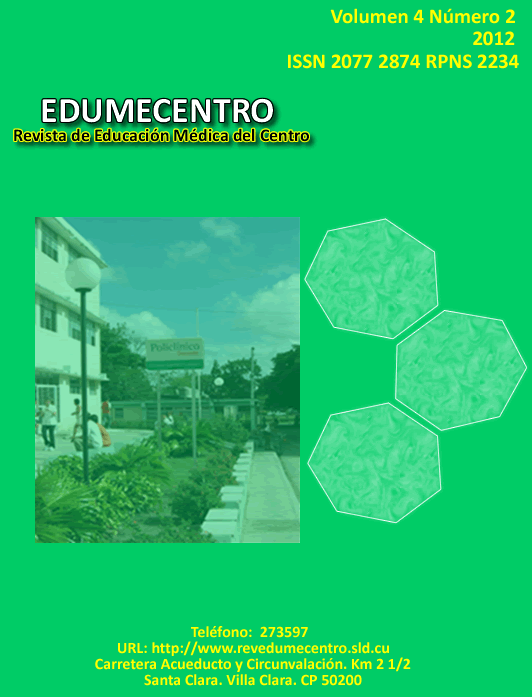The educative software, a useful tool for the subject History of Cuba I
Keywords:
History of Cuba, medicine history, educative software.Abstract
A qualitative research work was carried out in the “Lidia Doce Sánchez” Health University Site of Sagua la Grande municipality from January 2008 to March 2009 with the objective to design an educative software as a material aid for the subject History of Cuba I in the Medicine career. The universe comprises all the students of the second and third year of the traditional model as well as the professors who work with the subject. Empirical and theoretical methods were used and the information gathered was contrasted, as a technique of the qualitative research. It was detected that the syllabus doesn´t contain aspects on the History of Public Health in the location. There were selected three topics and they were grouped according to three different historical periods. It was designed an educative software with the contents on the History of Public Health in the location as a complement of the subject History of Cuba I.Downloads
Download data is not yet available.
Published
2013-02-18
How to Cite
1.
García López I, Blanco Balbeito N, La Rosa Hernández N, Plain Pasos C. The educative software, a useful tool for the subject History of Cuba I. EDUMEC [Internet]. 2013 Feb. 18 [cited 2025 Dec. 17];4(2):84-92. Available from: https://revedumecentro.sld.cu/index.php/edumc/article/view/174
Issue
Section
ARTÍCULO ORIGINAL
License
Los autores que publican en esta revista están de acuerdo con los siguientes términos:- Los autores/as conservarán sus derechos de autor y ceden a la revista el derecho de primera publicación de su obra, el cuál estará simultáneamente sujeto a una Licencia Creative Commons Reconocimiento-NoComercial-CompartirIgual 4.0 Internacional (CC BY-NC-SA 4.0) que permite a terceros compartir la obra siempre que se indique su autor y su primera publicación esta revista.
- Los autores pueden establecer por separado acuerdos adicionales para la distribución no exclusiva de la versión de la obra publicada en la revista (por ejemplo, situarlo en un repositorio institucional o publicarlo en un libro), con un reconocimiento de su publicación inicial en esta revista.
- Se permite y se anima a los autores a difundir sus trabajos electrónicamente (por ejemplo, en repositorios institucionales o en su propio sitio web) antes y durante el proceso de envío, ya que puede dar lugar a intercambios productivos, así como a una citación más temprana y mayor de los trabajos publicados (Véase The Effect of Open Access) (en inglés).










